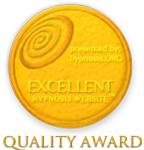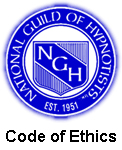
by Charles Curtis
Patients unfamiliar with medical procedures and outcomes overreact, complicating treatment with fear and resistant behavior. Chronic conditions with repetitive noxious stimuli cause feelings of overwhelm and despondency .Overactive “flight-or-fight” responses stress the body.
THE GOAL OF MEDICAL HYPNOSIS
Many studies show medical hypnosis reduces painful sensation and affect well below patient’s norms.Post-hypnotic suggestions link this deeply peaceful state to environmental cues, causing benefits to adhere well past the hypnosis session and to be reinvoked during critical periods such as surgery or pain.This restores patient dignity, increases the sense of control and self-mastery and makes the patient an active participant in his care.
MEDICAL HYPNOSIS AIDS PAINFUL CONDITIONS
-
Chronic pain, reduced, medication potentiated, reduced side effects
-
Headache pain, reduced, tension, cluster, vascular, migraine
-
Cancer pain, reduced, also side effects chemotherapy and radiation
-
Dental pain, reduced, also apprehension, gag reflex, bruxism
-
Burn pain, reduced, also apprehension, toleration of painful treatment
-
Children, pain reduced, also fear of strange and uncomfortable treatment
-
Elders, pain reduced, also fear of chronic illness, loss of function, grief
MEDICAL HYPNOSIS AIDS PAINFUL PROCEDURES (Barber)
-
Surgery
-
Endoscopies (pulmonary or intestinal)
-
Radiation
-
Invasive radiology
-
Invasive cardiologic procedures such as angiography, pacemaker insertion, and angioplasties
-
Time in the intensive care unit
-
Anticipated prolonged artificial ventilation
-
Chronic renal dialysis
-
Preparation for organ or bone marrow transplantation
-
Obstetrics
CANDIDATES FOR MEDICAL HYPNOSIS
-
Patients in chronic pain requiring long-term medication
-
Patients overly apprehensive about upcoming procedure
-
Patients feeling depressed over loss of function
-
Patients afraid of repetitive uncomfortable procedures
-
Patients stressed by noxious side effects of treatment
-
Patients feeling overwhelmed by forced lifestyle changes
-
Patients who find it difficult to quit smoking using other methods
-
Patients finding it difficult to stick to prescribed behaviors or diet
-
Patients with chronic muscle tension, anxiety, or poor sleep patterns
TYPICAL RESULTS OF MEDICAL HYPNOSIS (Barber)
-
Extremely apprehensive patients become calm, relaxed, and cooperative, and express having a sense of control
-
Preprocedure sedation is rarely required
-
Requirement for anesthetic agents is decreased
-
Patients awaken postoperatively calm, comfortable, and characteristically “smiling”, a most unusual sight in a recovery room
-
Postoperative requirement for narcotics is significantly reduced
-
Nausea and vomiting are markedly decreased
-
Patients mobilized earlier, discharged earlier, resume full activity sooner
-
Generally, patients are very cooperative and proactive and, therefore, easier to handle
SAMPLE MEDICAL HYPNOSIS SUGGESTIONS (Temes)
-
Visualize yourself the night before the operation.You are relaxed .Notice how calm you are.You are thinking pleasant thoughts.It will be easy to fall asleep the night before your surgery.
-
You’ll be calm and comfortable before the operation began, during the operation, and afterwards.
-
If at any time, you feel anxious, it will be easy for you to close your eyes and remember your special scene.
-
It will be easy for you to keep your blood away from the surgical site during the operation.
-
You’ll be amazed at how quickly your wound will heal.
WHY MEDICAL HYPNOSIS WORKS
“Suggestion in its most potent form – (hypnosis) establishes the capacity for conditioning and formation of habit patterns that exceeds those that are developed at normal levels.Thus reassurance, reeducation, and deconditioning are more durable than when employed at nonhypnotic levels.When repetitive reinforcement through auto-hypnosis is utilized, healthy responses become autonomous.It is this self-sustaining feature of hypnosis conditioning that reverses faulty thinking processes and behavior patterns responsible for maintenance of stress associated with a wide variety of psychosomatic disorders.” (Kroger, pg 191)
CASE HISTORY OF MEDICAL HYPNOSIS SHOWING TYPICAL LARGE POSITIVE CHANGE IN PATIENT DEMEANOR
Excerpt (pgs 245-246) from Bejenke, Christel, M.D., “Painful Medical Procedures”, (pgs 209-266) from “Hypnosis And Suggestion In The Treatment of Pain: A Clinical Guide, Norton (1996).
“Mr. Galt…was experiencing severe preoperative apprehension prior to his parathyroidectom.yA self-described ‘control-freak,’ he considered submitting to anesthesia to be the ultimate loss of control .Though he had numerous concerns about his operation, he was especially preoccupied with the fear of death under anesthesia.Mr Galt had sought numerous consultations and second opinions regarding his surgery and had spent many hours researching the medical literature.For some time he had been suffering sleep deprivation as a result of his growing apprehension.”
“The preanesthesia visit with me, several days before surgery, included a thorough discussion of of his anesthestic options, instructions, and hypnotic rehearsal… After the hypnosis experience, Mr. Galt commented spontaneously, ‘I tapped into a wellspring of my own power.’ Because of his newfound calm, he used none of the sedatives he had previously requested; he was relaxed and slept very well in the remaining days before surgery.”
“Mr. Galt arrived on the morning of surgery well rested, expressing a cheerful calm.The floor nurses who had seen him prior to the intervention found his calm demeanor very surprising.He had to wait several hours before being taken to the operating room. Although this prolonged wait is usually very distressing to patients, unless they are sedated, Mr. Galt required no sedation, and arrived in the operating room very alert, yet calm and cooperative. I helped him develop a hypnotic condition by using a posthypnotic cue (a deep breath), which facilitated a very gentle induction of general anesthesia.”
“Following the surgery, Mr. Galt was awake immediately after extubation.He was free of pain in the recovery room, had a peaceful night, declined all offers of analgesic injections, but accepted two analgesic pills.He left the hospital a little over twelve hours after discharge from the recovery room.That evening, he felt so well that he went to the movies, and then he jogged the following morning.As might be expected, Mr. Galt was deeply pleased by his experience.”
CONCLUSION
Medical hypnosis greatly reduces noxious sensation and negative affect caused by painful conditions or procedures. Physical relaxation and peace of mind are routinely obtained in the hypnotic state by the skilled hypnotist, providing welcome relief to the apprehensive or long-suffering patient.
BACKGROUND OF SOURCES FOR THIS ARTICLE
-
Joseph Barber, Ph.D., Associate Clinical Professor, Departments of Anesthesiology and Rehabilitation Medicine, University of Washington School of Medicine.
-
Christel Bejenke, M.D., private practice in anesthesiology, Fellow in The Society for Clinical and Experimental Hypnosis.
-
William S. Kroger, M.D., founder American Society Clinical Hypnosis
-
Roberta Temes, Ph.D., Clinical Assistant Professor, Department of Psychiatry, SUNY Health Science Center
BIBLIOGRAPHY
-
Barber, Joseph, PhD. (Editor), Hypnosis And Suggestion In The Treatment of Pain: A Clinical Guide, Norton (1996)
-
Kroger, William S., M.D., Clinical and Experimental Hypnosis, Lippincott (1977)
-
Temes, Roberta, PhD., Medical Hypnosis: An Introduction And Clinical Guide, Churchill Livingstone (1999)






